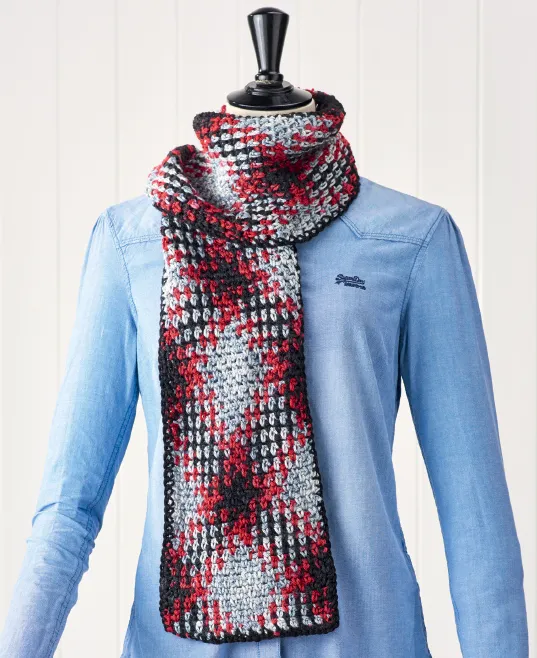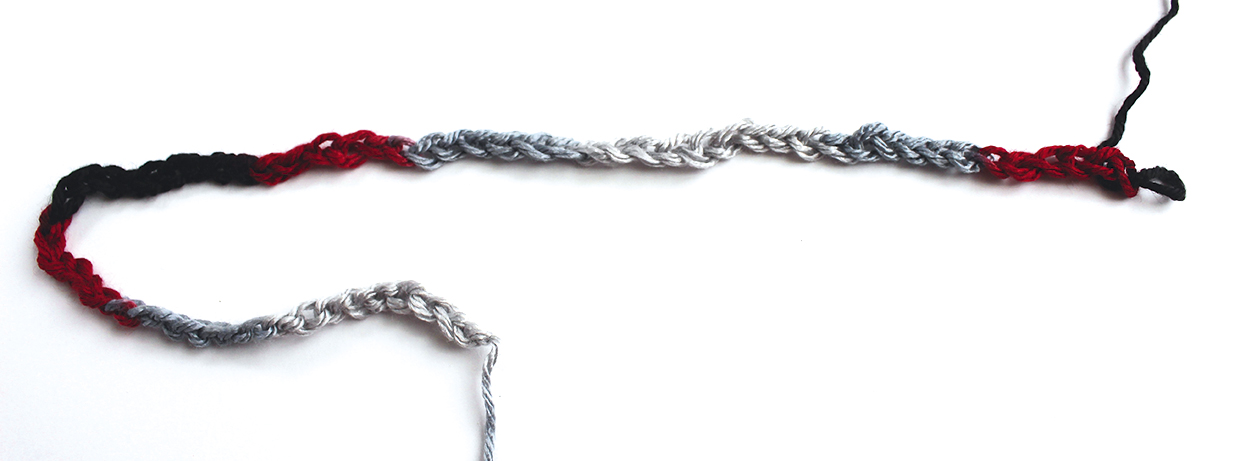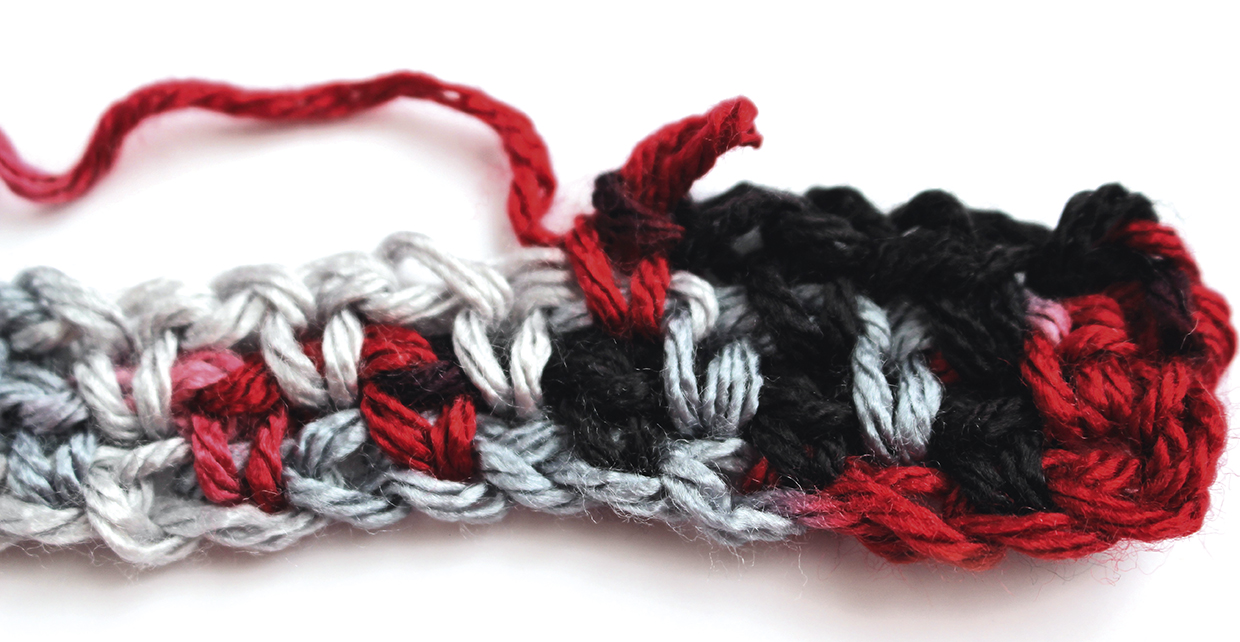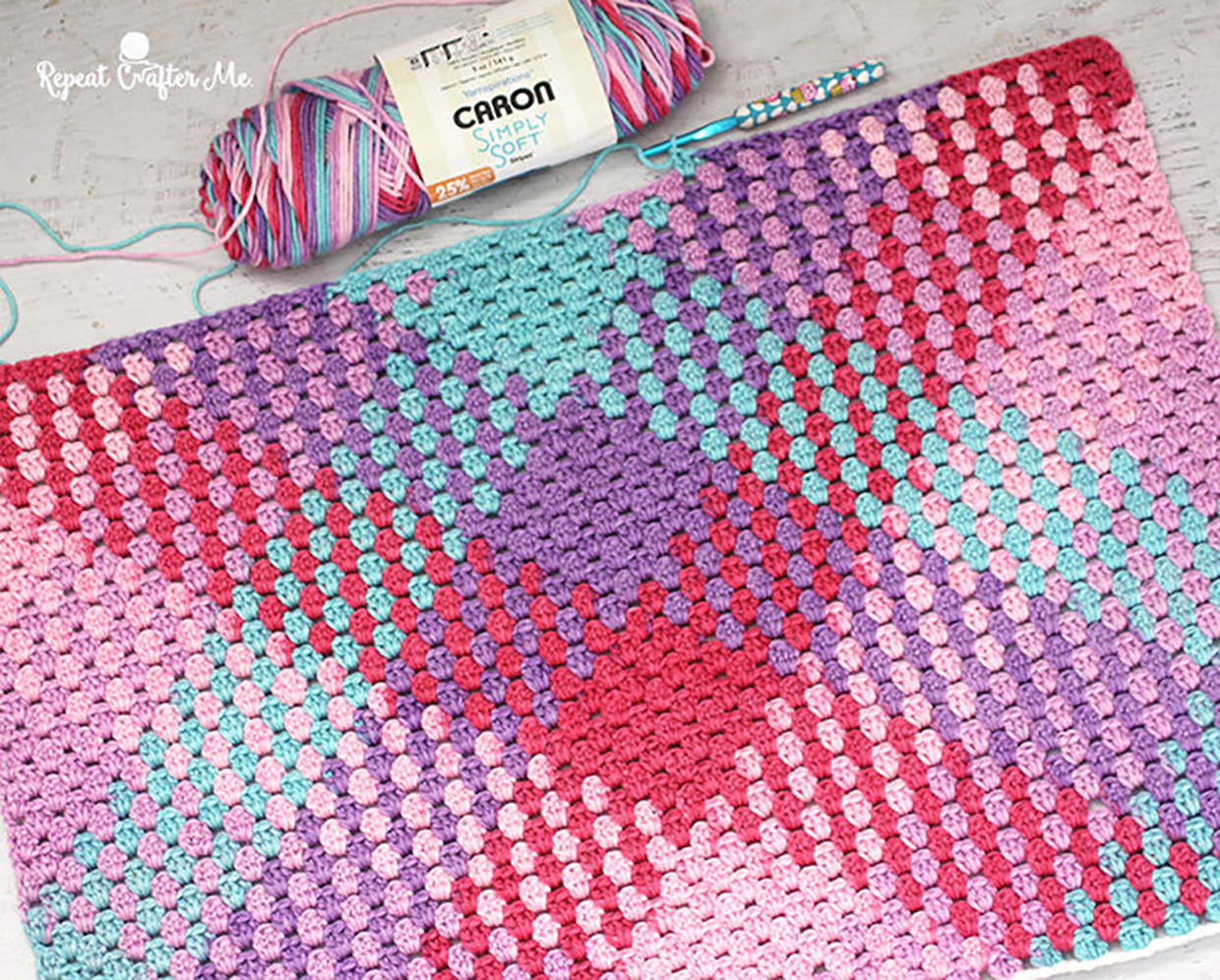We all love the vibrancy that variegated yarns can bring to a crochet project, but you can also use them to create effects such as argyle-style patterns that have a fascinating woven look. The technique is known as yarn pooling, planned pooling or colour pooling. We’ve seen some fantastic examples of it cropping up online lately, so we dug a little deeper to find out exactly how it works.

The technique involves intentionally working the colours of a multi-coloured ball of yarn in a specific way, to create a design or colour effect when you crochet. The colour pooling technique is done with an easy formula and works with almost any variegated yarn, which means you can get an argyle look without having to cut the yarn for each colour.
Crochet designer Ann Mancini-Williams explains just what you need to know, and guides you step-by-step through the process of making her impressive planned pooling argyle scarf. The hook size required may depend on the yarn you choose. With this planned pooling argyle example, the tension was 15sts and 13 rows to 10x10cm. Once you’ve figured out tension and the colour sequence aspect, it’s chains and double crochet stitches all the way. This yarn pooling project is fantastic for developing your skills.

Planned pooling suggested yarns
Planned pooling requires very particular kinds of variegated yarn, so here's a few popular choices for planned pooling crochet.
Bernat Softee Chunky Ombre in shades Dad’s Scarf and Shadow.
Caron Simply Soft Camo in shades Red Camo and Woodland Camo.
Lion Brand Vanna’s Choice Multi in Charcoal Print.
Red Heart Super Saving Pooling in Carnival Pooling.
Many variegated yarns will work, but self-striping yarn will not work. When looking for a yarn, the yarn must have an even number of colour sequences. For example, if the yarn has 15cm of blue, 10cm of white and 5cm of purple then every repeat of those colours must be 15cm of blue, 10cm of white and 5cm of purple – these are referred to as the colour sequences. The individual colours within a sequence do not have to be the same lengths, but the whole colour sequences do.
You also want the colours in each sequence to be no less than 7.5cm long and no more than 30cm long. For our scarf, we used 2 skeins of Caron Simply Soft Camo (100% acrylic, 113g/186m) in Red Camo.

To start
Use any hook size you want for planned pooling – start by using the size recommended on the ball band and see how you get on. The key aspect to this technique is tension – there are tips and tricks on this later to help you succeed.













